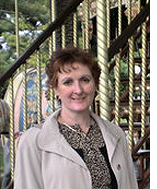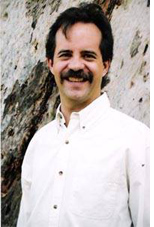|
By Sara Appel-Lennon
 SAN DIEGO—In the summer of 1988 during a raft trip along the Colorado River, Jon Nachison, clinical director and Robert Van Keuren, executive director of Vietnam Vets of San Diego, discussed their concern over the growing numbers of homeless veterans requesting help from VVSD. SAN DIEGO—In the summer of 1988 during a raft trip along the Colorado River, Jon Nachison, clinical director and Robert Van Keuren, executive director of Vietnam Vets of San Diego, discussed their concern over the growing numbers of homeless veterans requesting help from VVSD.
The two veterans, close friends and colleagues decided to organize the first Stand-Down in the country in San Diego later that year. Due to its success, the men travelled to other states to teach others how to organize a Stand-Down.
Stand-Down is a term used to give soldiers a reprieve from combat to “rest and recover” in a safe environment. Interestingly enough, there was no Stand-Down during the Vietnam or the Gulf Wars because the soldiers fought daily.
According to Nachison, soldiers who fought in Iraq and Afghanistan are becoming homeless at a faster and greater rate than from Vietnam. “Repeat deployments” are the causes of their psychological problems, the redeploying of those who were already in combat without giving them a chance to rest.
Stand-Down is for any United States veteran who is homeless, whether the person was in combat, and regardless of when the veteran served in the military.
As it will again this weekend, San Diego Stand-Down takes place annually in mid July on the baseball field of San Diego High School. Nachison said that the field is purposely modeled after a base-camp with many veteran volunteers, …”to take away the stigma of being homeless, feeling proud of being a veteran.” This serves as a reminder they are part of a veteran community that cares about their welfare. For this reason homeless veterans are referred to as residents, and are provided three days of respite. They receive food, shelter, a place to take a shower, clean clothes, haircuts, healthcare, social and human services including chiropractic, massage, acupuncture, healing touch, and most importantly, camaraderie with other veterans who are there to listen and share similar experiences.
Nachison said that his Jewish values greatly contributed to his “espousing causes for downtrodden.” He was raised as a member of a Conservative congregation in Albany, New York, and he attended Yeshiva University. Nachison said that he hasn’t tried to earn a lot of money in his life. Instead he said that he is interested in things that have meaning and value to him.
Nachison mentioned Pirkei Avot, Ethics of the Fathers. He said “If nobody is stepping up, this is what a Jewish person should do. Do what needs to be done.” In that regard, my own Temple Emanu-El recruits many members to volunteer at Stand-Down. Lee Loventhal is the coordinator.
Nachison, a psychologist, admires Kurt Lewin, the father of Social Psychology. He liked Lewin’s theory and applies it to Stand-Down. Behavior is a function of a person and environment. Nachison said “If you want to change behavior, create an environment to produce a different behavior.” This can be expressed in the formula B=f(pxe).
This is Nachison’s 21st year working with Stand-Down and he told of being moved when a seven year old offered to donate money from his piggy-bank to Stand-Down after he learned about it by watching television. Some donors want to remain anonymous because of their altruism. In this case, the boy's name was not easily remembered, although his gesture was remembered in a big way. Isn’t that what matters in the end?
Go to top of right column
|
|
 Nachison made it clear that he doesn’t organize Stand-Down alone, he is the facilitator. There are many volunteers who start planning months in advance. Nachison made it clear that he doesn’t organize Stand-Down alone, he is the facilitator. There are many volunteers who start planning months in advance.
One prominent volunteer is Mitch Lehman (at left) , Integrative Medicine Director for National Stand-Down. Lehman is a teacher and acupuncturist at Pacific College of Oriental Medicine. He contacts and arranges the therapists from massage, acupuncture, healing touch, reiki, and chiropractic schools to donate their time by providing services to Stand-Down residents.
Lehman has been offering his time at Veterans Village San Diego once per week for the past eight years. VVSD was formerly Vietnam Veterans San Diego, now a non-profit organization.
Lehman’s desire to help the homeless was unexpected yet heartfelt.
One Sacramento morning, Mitch Lehman watched the many shadows living on the streets, as Jethro Tull belted out the song, Aqua Lung, from the radio on the drive to work. Tull sang about working with the homeless. He felt an inner urge to welcome home those with no home. Lehman said “I knew something needed to be done.”
Lehman served in the Navy from 1991 until 1995 during the first Gulf War where he repaired airplanes. Fortunately he has not engaged in external combat, however, his internal combat has been with migraine headaches and gastritis for the past 17 years.
He worked at the Veterans Administration Hospital work-study program as a phlebotomist while training to be an acupuncturist. He longed to lighten the heavy burden of pain and remorse the homeless veterans carried, and instead instill them with a sense of hope and joy.
He then showed up at Stand-Down where he met Nachison.
In 2001 he was given half of a tent to administer acupuncture treatments. He provided 375 treatments in 15 hours or 25 veterans per hour where each veteran returned all three days.
In 2002 he asked Pacific College of Oriental Medicine to assist with Stand-Down. That same year, he spoke with Al Pavitch, then Director of VVSD about being able to administer acupuncture treatments to veterans at VVSD. He gave treatments there once per week for the past eight years.
Nachison and Van Keuren’s chat about homeless veterans while travelling along the Colorado River led to the birth of Stand-Down. Because they were both proactive, more than 100, 000 veterans have benefitted from Stand-Down and there are more than 300 Stand-Downs nationally.
While much has been done to reach out to homeless veterans, there is more to do.
As Nachison said, “People are patriotic when boots are on the ground.” He said that the soldiers are the same people. They need support, housing, medical treatment and legal advice. The Veteran’s Administration helps with health problems, but the V.A. can’t do it all because there are so many homeless veterans and the V.A. doesn’t usually deal with families. Nachison continues to work to bring other community organizations together to resolve this growing challenge.
|
|

